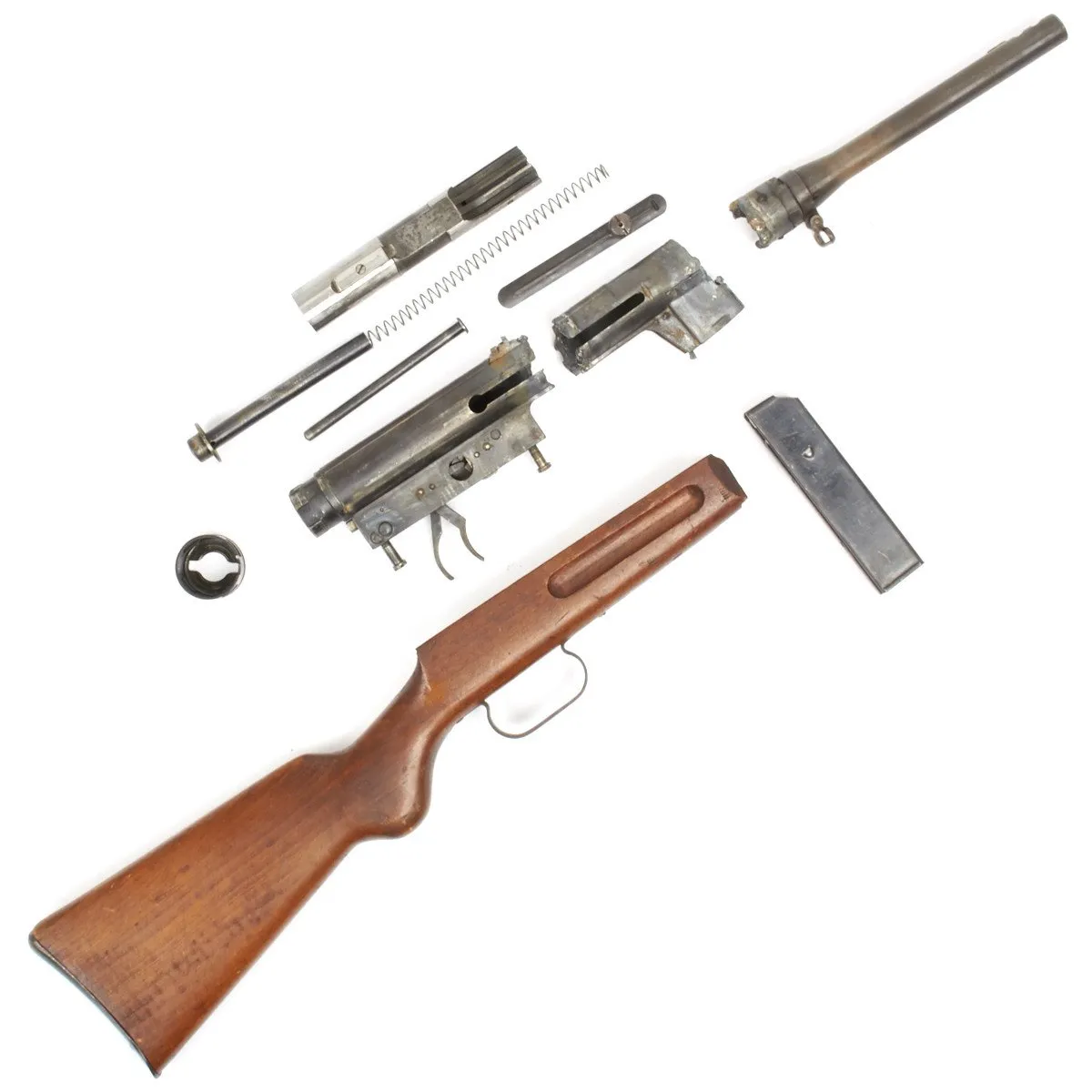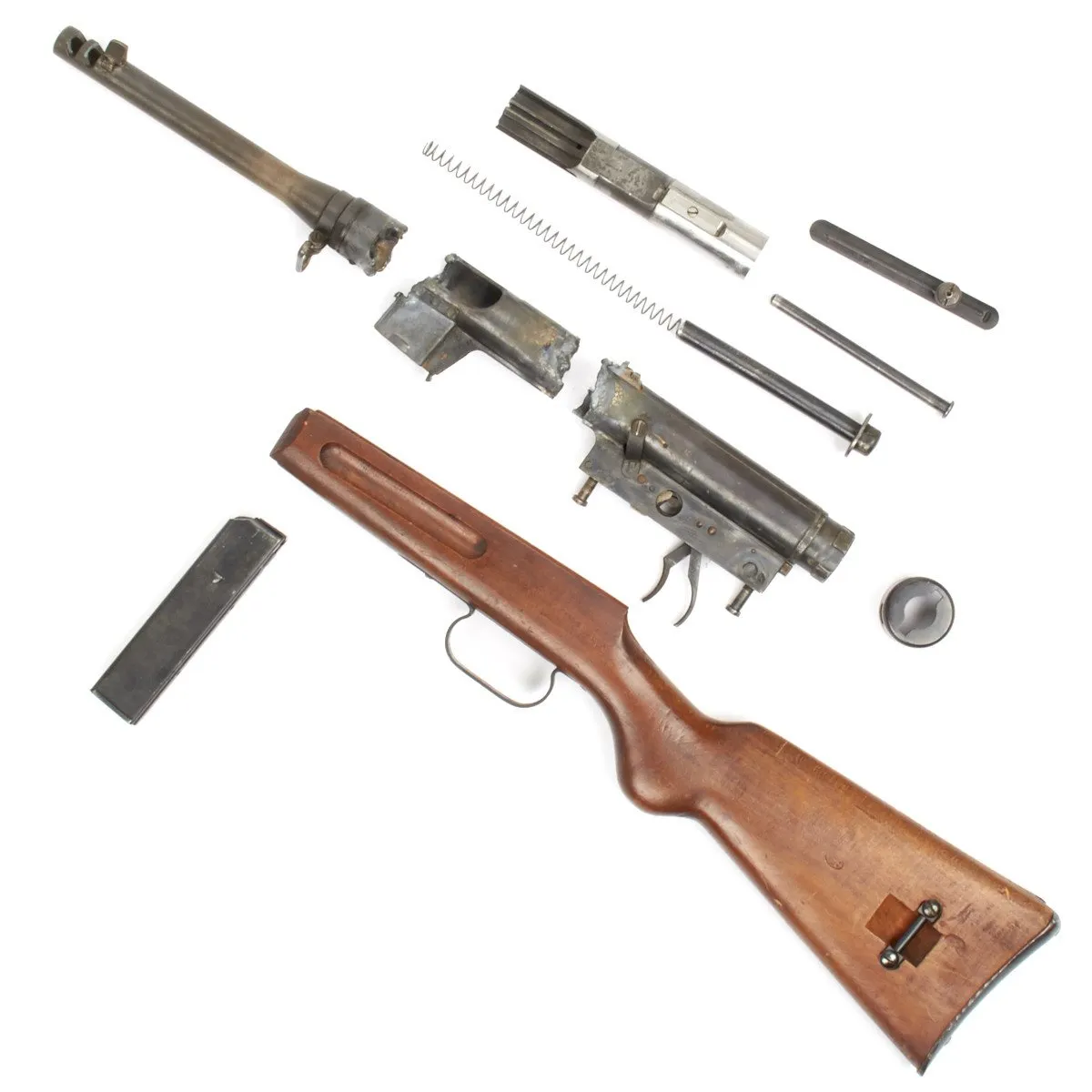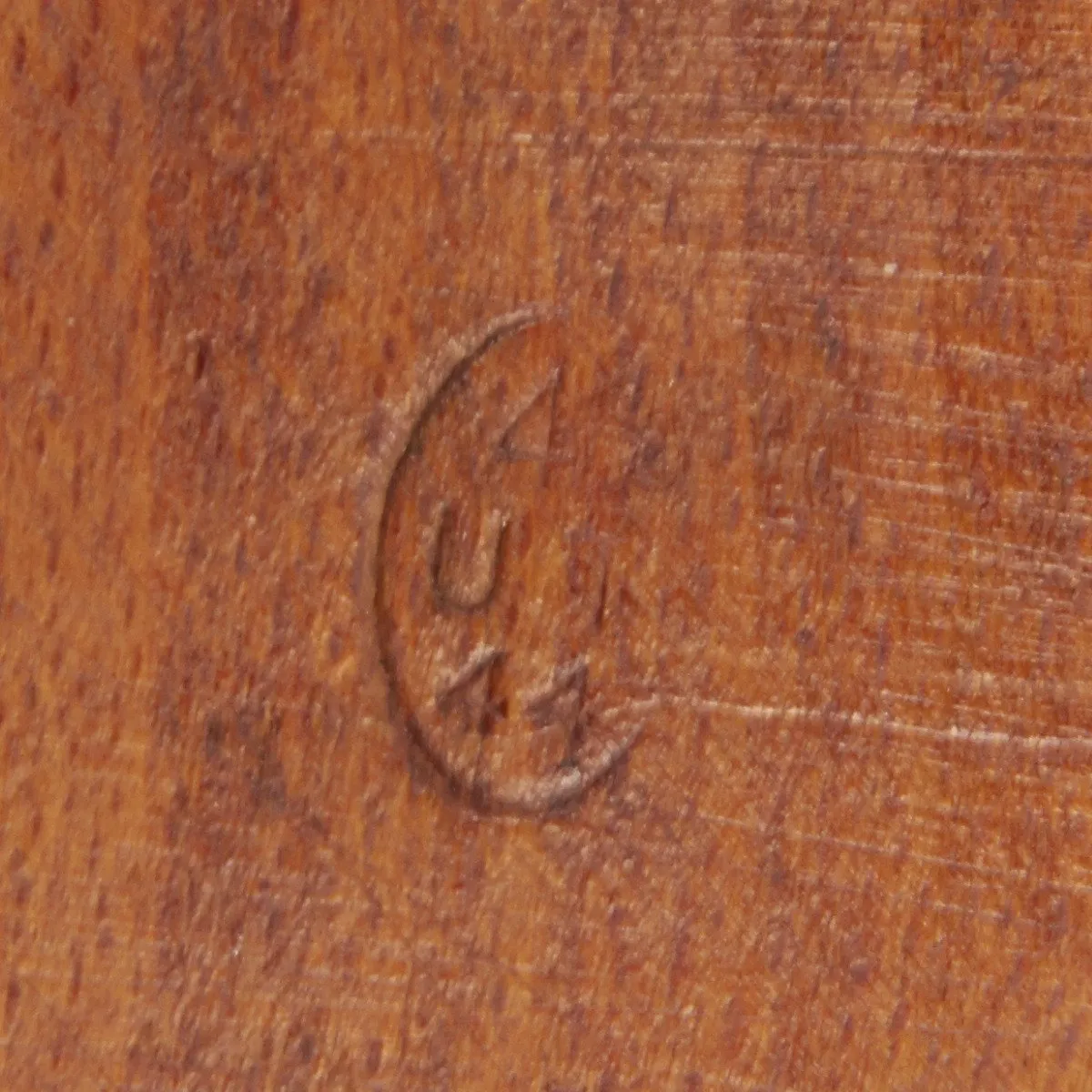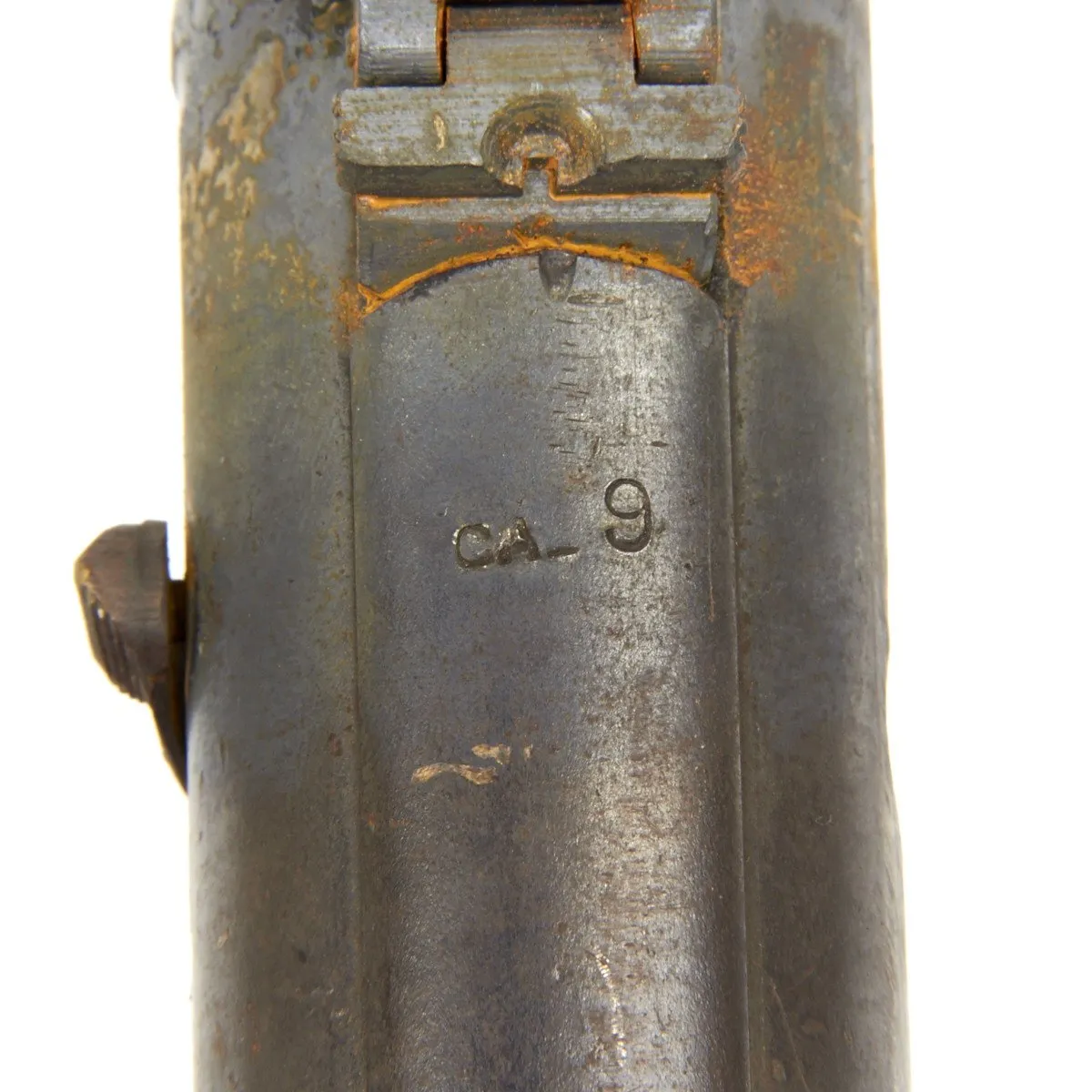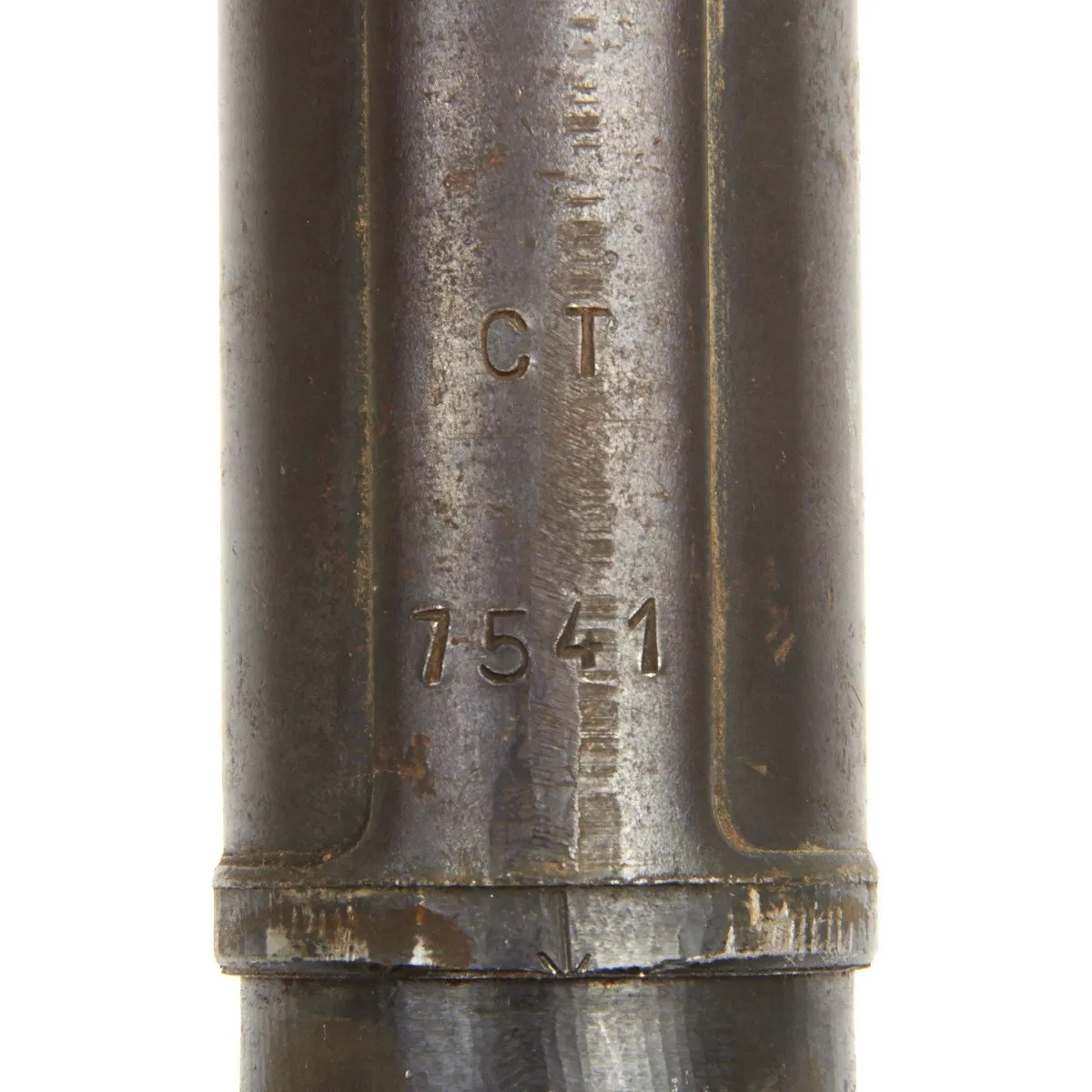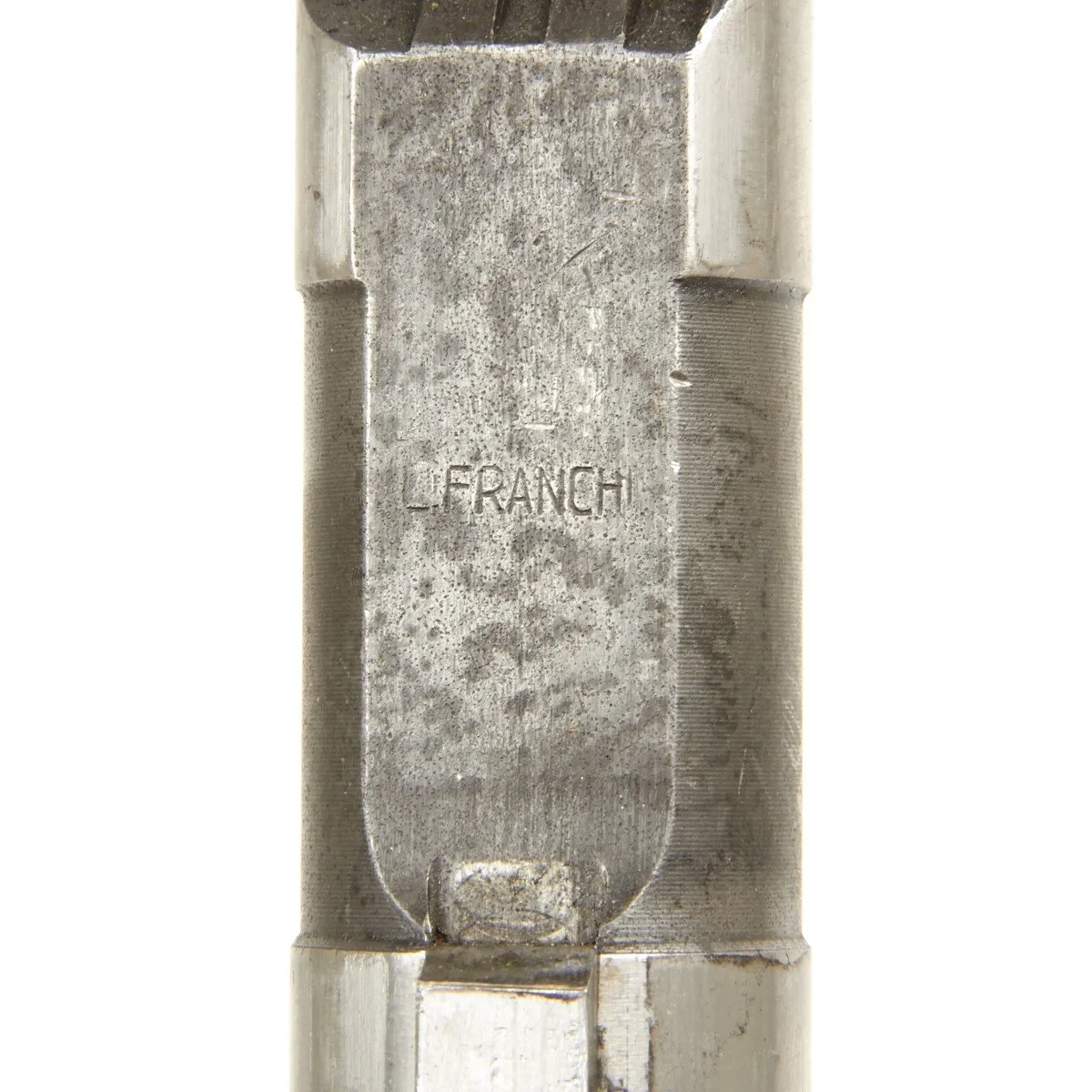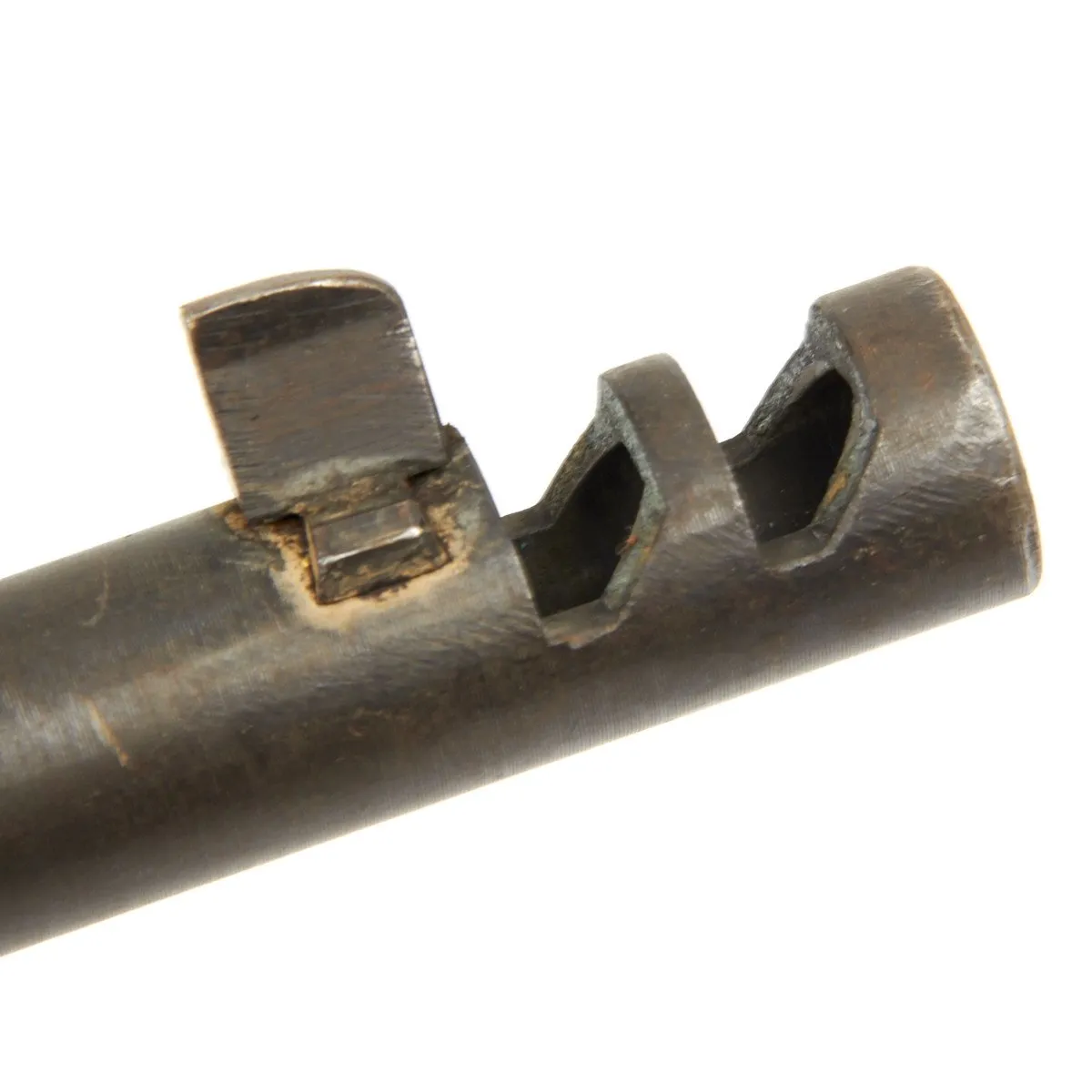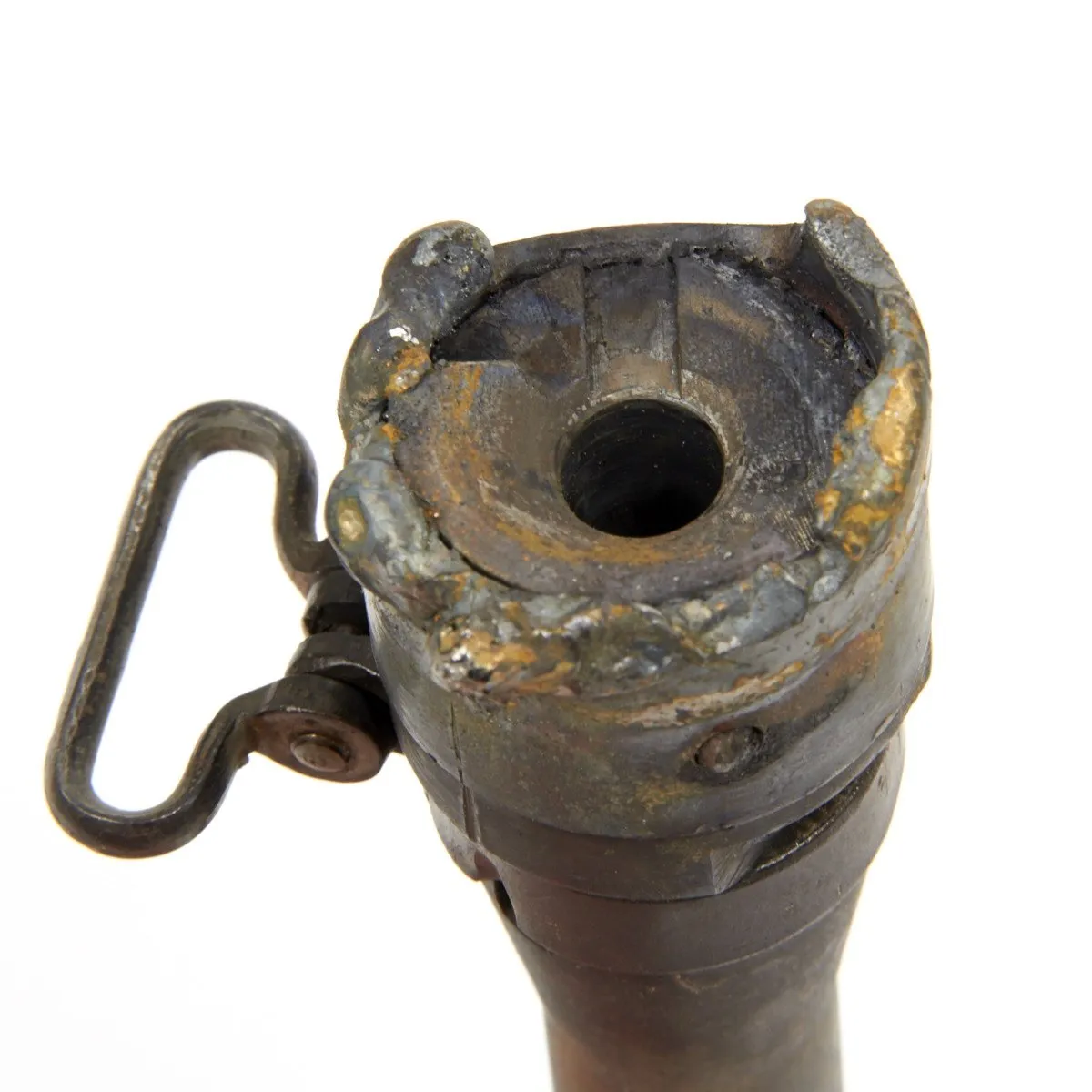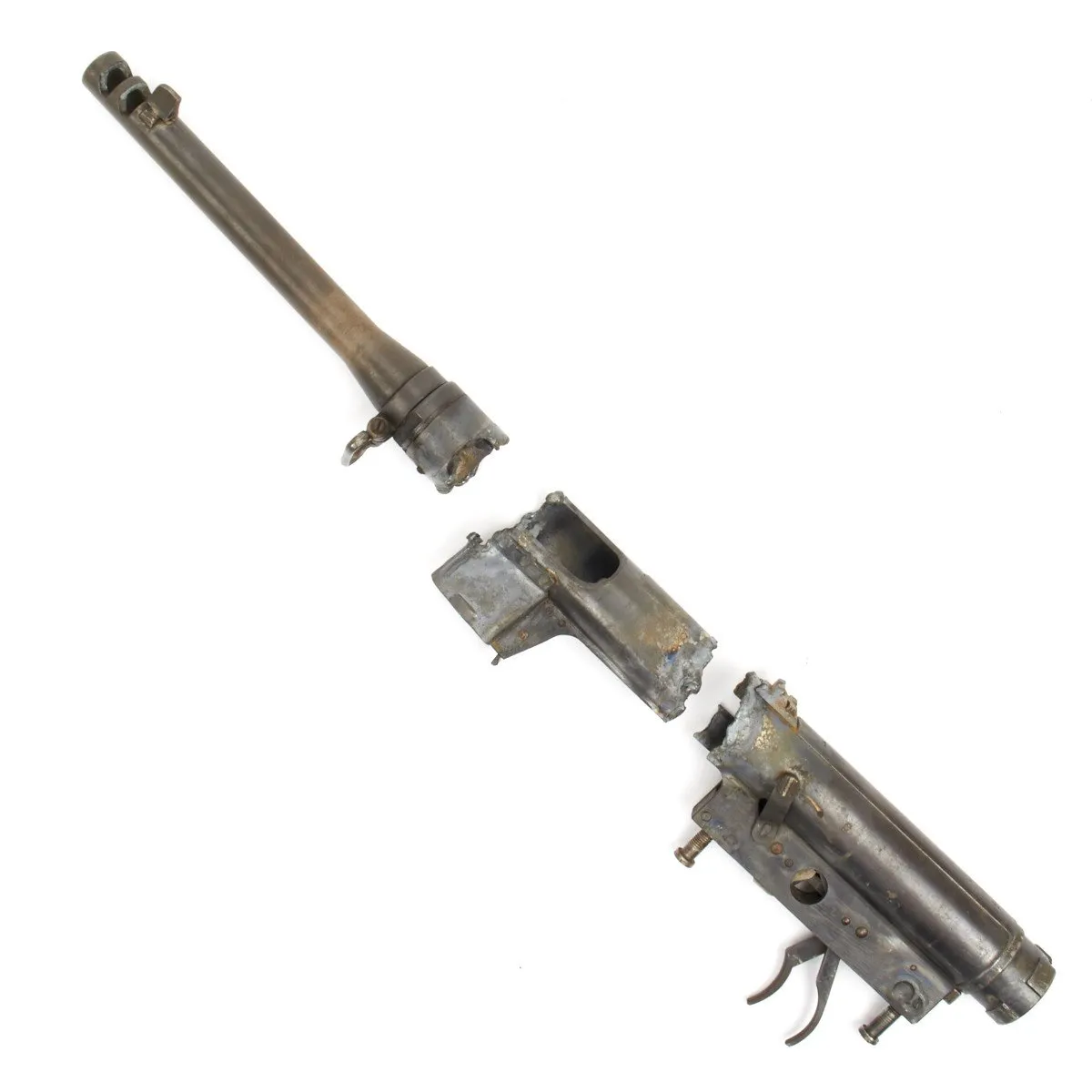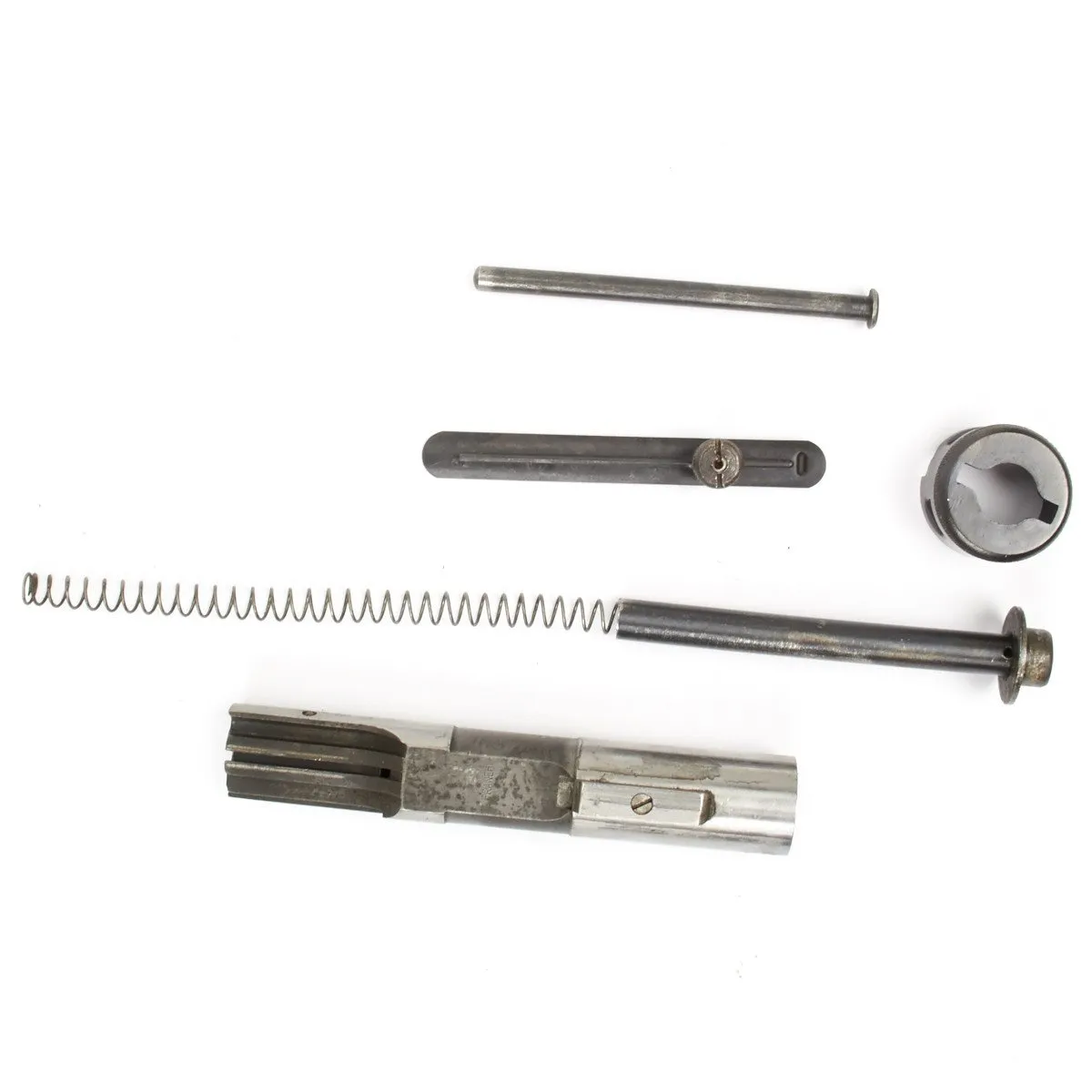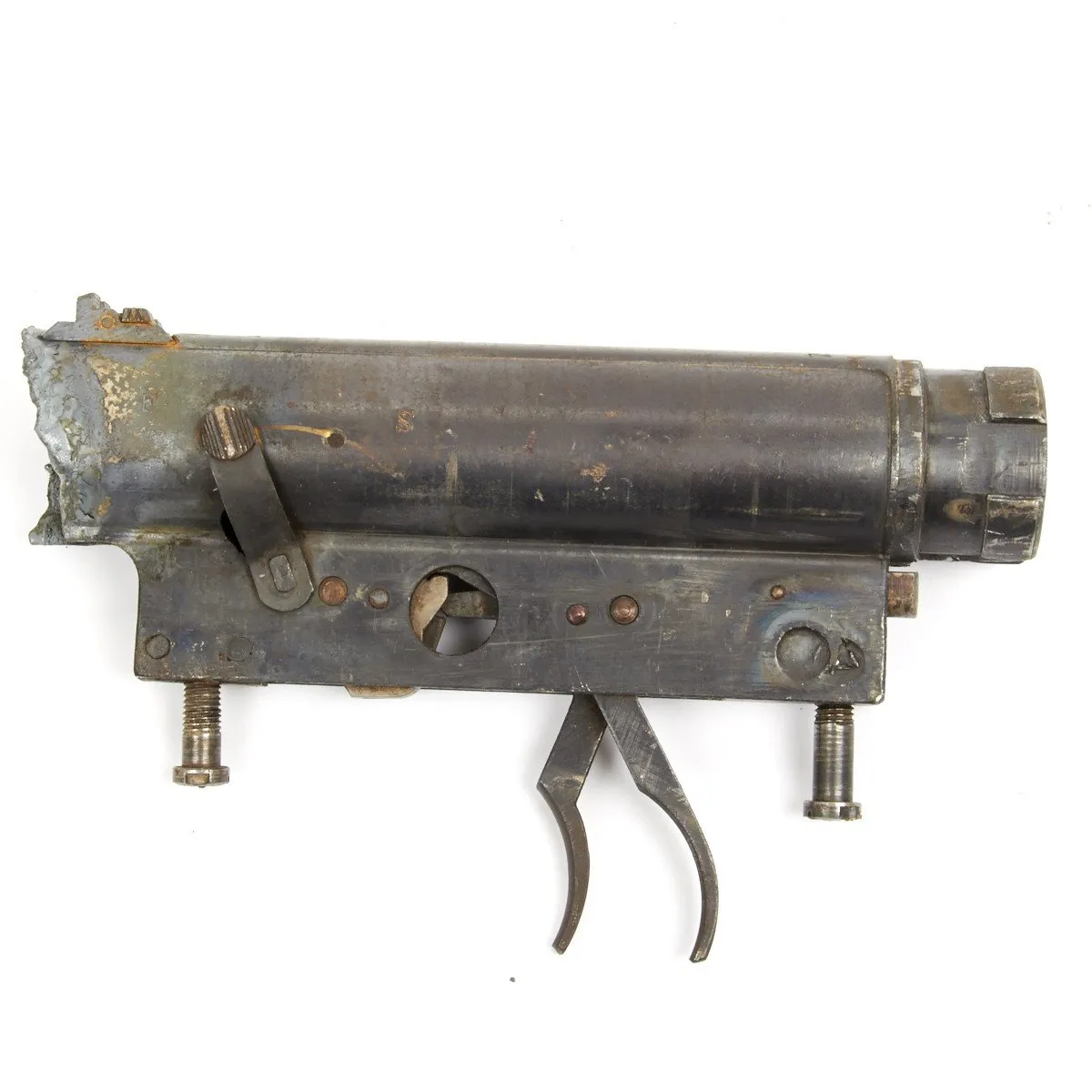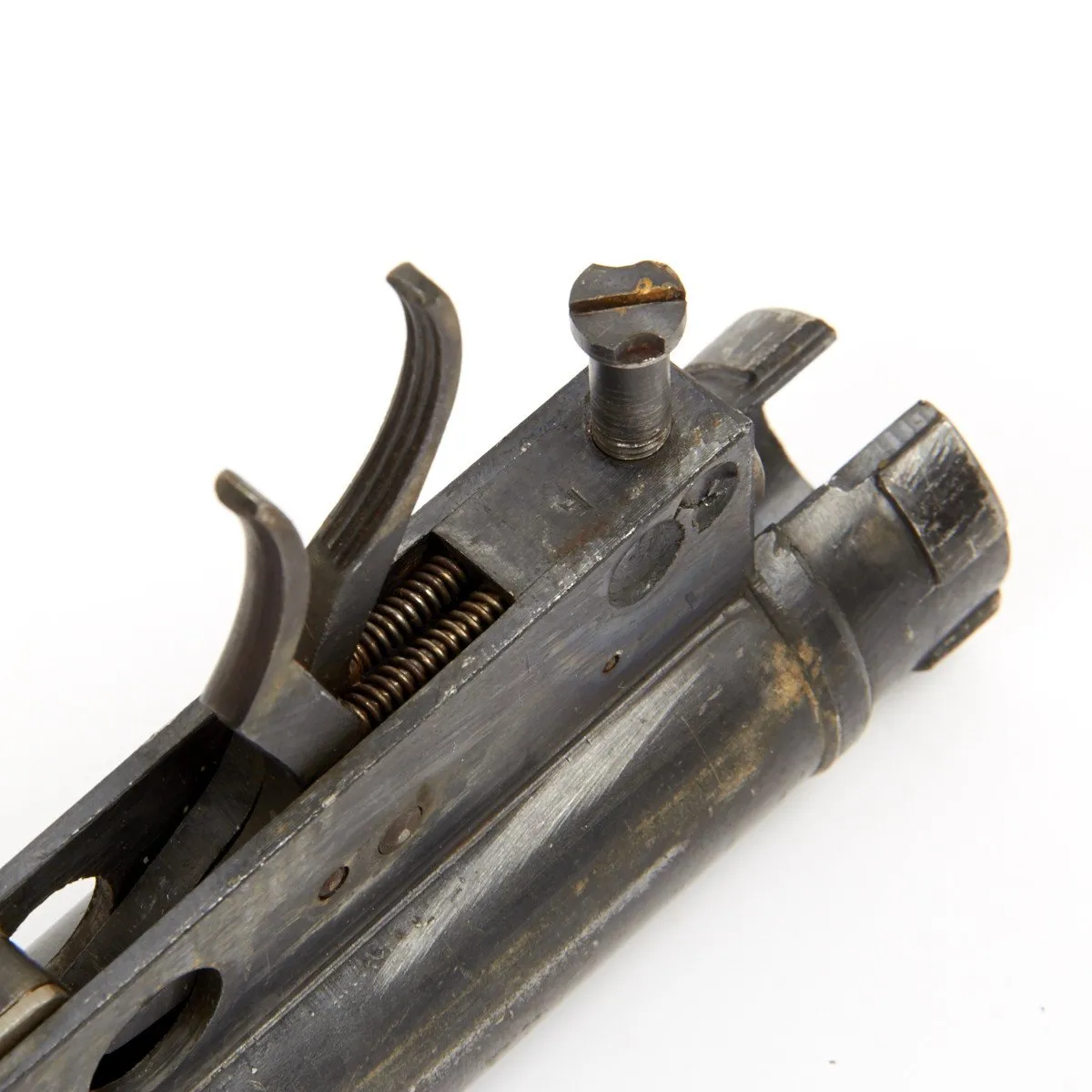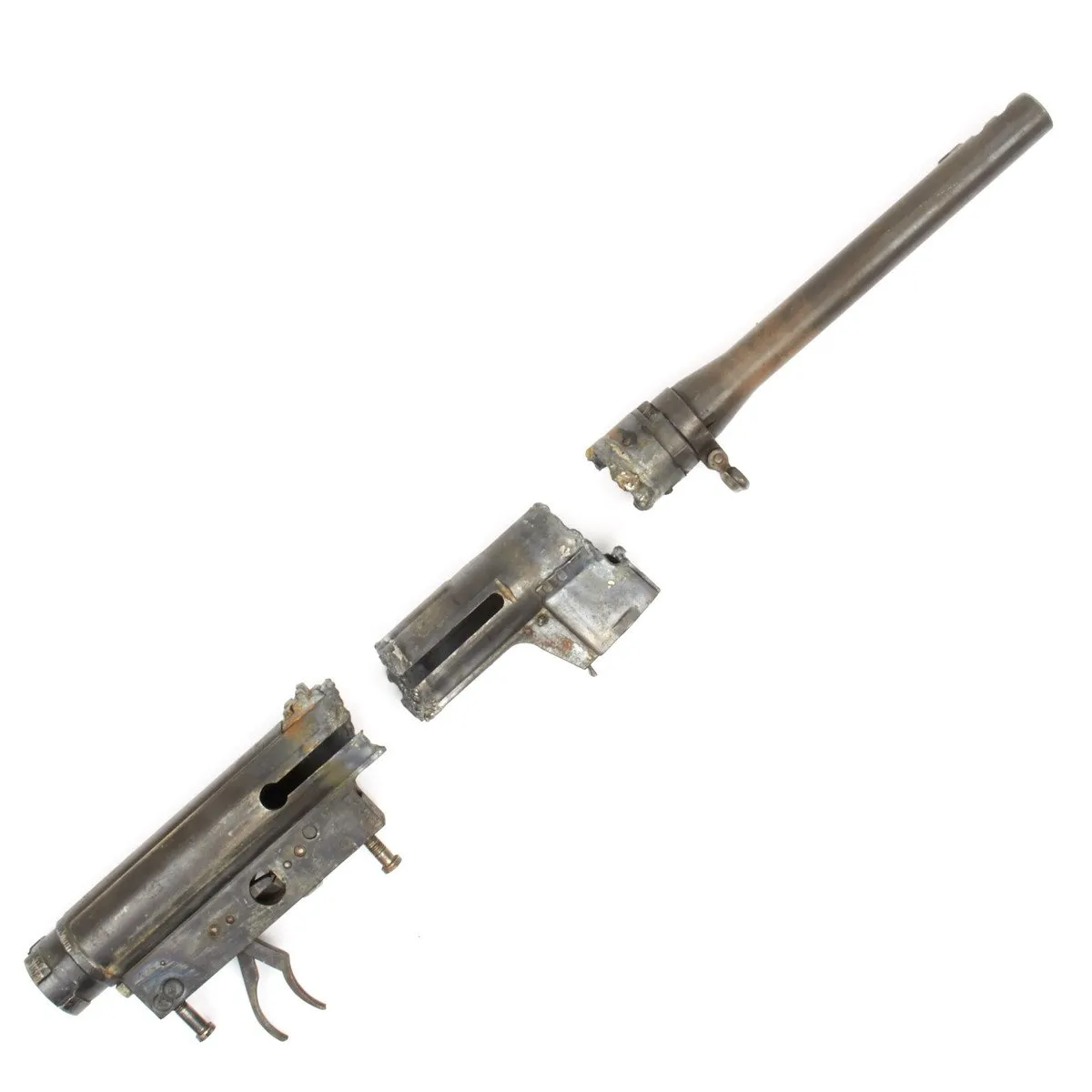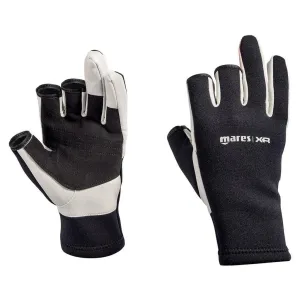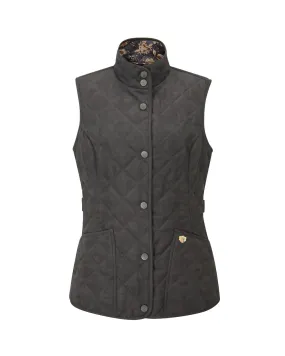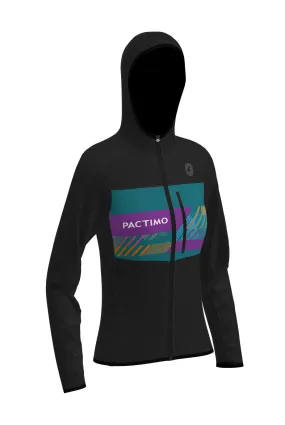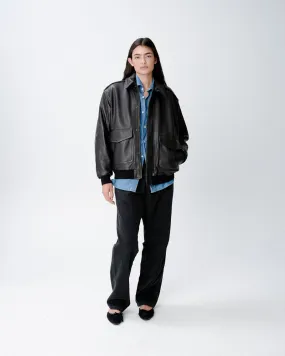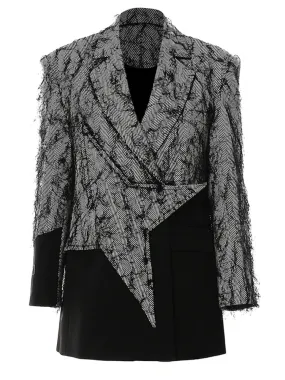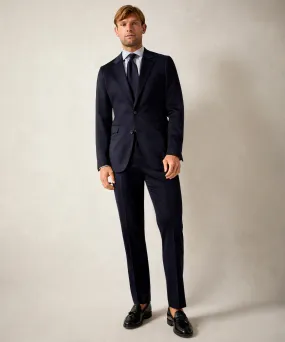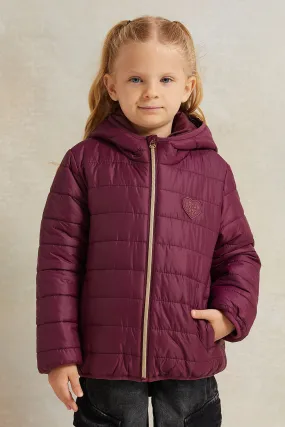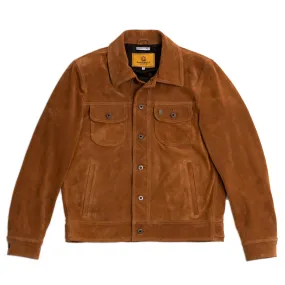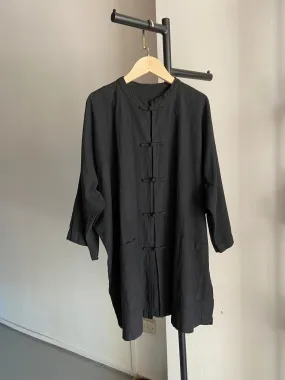Original Item: Only One Available. This Model 38/44 very recently acquired directly through a US metropolitan police force from a Veterans family. It is a genuine USGI bring back. The stock is marked:
UI
44
This sample flame cut to BATF specifications is offered in incredible condition bearing original serial number CT 7541 on the receiver.
Features a fully functional barrel and other wartime markings, comes complete with original magazine where permitted.
The MAB 38 (Moschetto Automatico Beretta Modello 1938), Modello 38, or Model 38 and its variants were a series of official submachine guns of the Royal Italian Army introduced in 1938, and used during World War II.
This Model 38/44 was a minor revision of the 38/43, in which the bolt was simplified and a large-diameter recoil spring utilized in place of the operating spring guide.[9] It also eliminated the fluting to save time and increase production.[9] The 38/44 was also adopted by the German army as the MP.739. A variant of the Model 38/44 was fitted with an MP40-style under-folding stock, and given the designation Model 38/44 Special or Model 1.
Originally designed by Tullio Marengoni in 1935, the Modello 38 (M38) was developed from the Beretta Modello 18, itself derived from the Villar Perosa light machine gun of World War I fame. It is widely acknowledged as the most successful and effective Italian small arm of World War II.
Italy's limited industrial base in World War II was no real barrier toward the development of advanced and effective small firearms since at the time most weapons did require large amounts of artisanal and semi-artisanal man-hours to be fine-tuned and made reliable by default. At this, Italian specialized workers excelled and the initial slow production ratio meant that the Model 38 only became available in large numbers in 1943, when the fascist regime was toppled and Italy split between allied-aligned co-belligerent forces and German collaborationists of the Italian Social Republic. During 1941 and 1942, this weapon was available almost exclusively to paratroopers, Blackshirts, tank crews and Carabinieri military policemen, given the need of all of the former to express high volumes of firepower in prolonged actions or to keep close-quarters combat superiority. The standard paratrooper of the Folgore airborne division was armed exclusively with this weapon, and the division gave outstanding combat results. Similarly, Blackshirt legions (one per infantry division) were regarded and used as elite assault units both for their fanaticism and their armament, in which the Beretta 38 bulked. Regardless of the tables of organization and equipment of a given unit, the Beretta 38 was a popular weapon that could eventually find its way into the hands of virtually any soldier, especially amongst officers and higher non-commissioned officers, notably in Bersaglieri light infantry, artillery and armoured units. However, this weapon remained a rare view amongst common infantry and Alpini mountain infantry.
Italy developed a dedicated magazine-holding vest for elite troops (Blackshirts, paratroopers) armed with the Beretta 38; these were dubbed "Samurai" due to the aesthetic similarity of the stacked magazines with traditional Japanese armour. However these only came into use during the brief life of the R.S.I. and by then could be seen in the employ of many different units whose "elite" status could have been reasonably questioned (such as Black Brigades and other militias).
The 1938 series was extremely robust and proved very popular with both Axis forces as well as Allied troops, who utilized captured examples. Many German soldiers, including elite forces such as the Waffen-SS and Fallschirmjäger forces, actually preferred to use the Beretta 38 in combat.[ Firing a powerfully loaded Italian version of the widely distributed 9×19mm Parabellum cartridge, the Cartuccia Modello 38, the Beretta was accurate at longer ranges than most other submachine guns. Fully automatic or single-shot fire was selectable by the use of two triggers. The Model 38 had a wooden stock, was about 800 millimeters in length, and weighed about 3.3 kilograms when loaded, with an effective range of about 200 meters.




